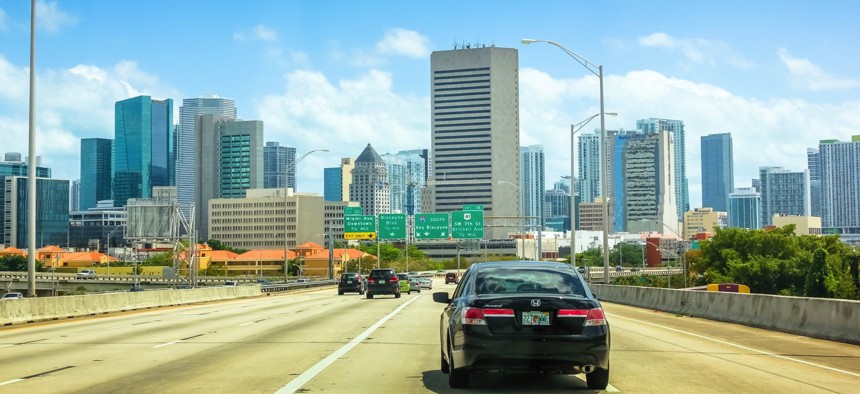With Billions in Recession-Era Highway Grants, Why Were Improvements Limited?


Connecting state and local government leaders
New research explores this question at a time when the Trump administration is weighing plans for a new infrastructure spending program.
New research examines why nearly $28 billion of recession-era funding for highway projects didn’t yield greater improvements to the nation’s road network.
Bill Dupor, an assistant vice president and economist in the research division with the Federal Reserve Bank of St. Louis, digs into the issue in the reserve bank’s latest quarterly Review.
Dupor looks at $27.5 billion funneled through the Federal Highway Administration as part of the 2009 American Recovery and Reinvestment Act. Most of that amount was directed toward grants for state governments, marking a substantial boost in federal highway aid.
But in years before and after the Recovery Act, according to Dupor, the number of structurally deficient bridges in the U.S. was close to unchanged, as was the number of workers on road and bridge projects. And, he says, over 40 percent of the nation’s population lived in states where the overall value of highway construction spending was lower in 2010 than in 2008.
“Despite the tremendous influx of federal funds, the highway system showed little improvement,” Dupor writes.
Why was this the case? An explanation Dupor offers is that as states received the federal grant funding for road projects, they could decrease their own spending on highway infrastructure—freeing up those state dollars for other uses.
“Since states were facing budget stress from declining tax revenues resulting from the recession, it stands to reason that states had the incentive to do so,” Dupor writes, referring to the shifting of state highway funding to other areas.
He found that 15 states cut their total highway capital spending between 2008 and 2010. For instance, across that timeframe, the amount of state money spent per resident on highway infrastructure went down by $109 in Georgia, $98 in Texas and $73 in Maryland.
President Trump is currently pushing for a $1 trillion infrastructure package that would involve both public and private capital. Some city leaders have argued that, if the federal government ups infrastructure spending, more money should go directly to cities rather than through states.
Dupor’s article is titled, “So, Why Didn’t the 2009 Recovery Act Improve the Nation’s Highways and Bridges?” A full copy can be found here.
Bill Lucia is a Senior Reporter for Government Executive’s Route Fifty and is based in Washington, D.C.

NEXT STORY: Blackboard brings learning to the AWS GovCloud





